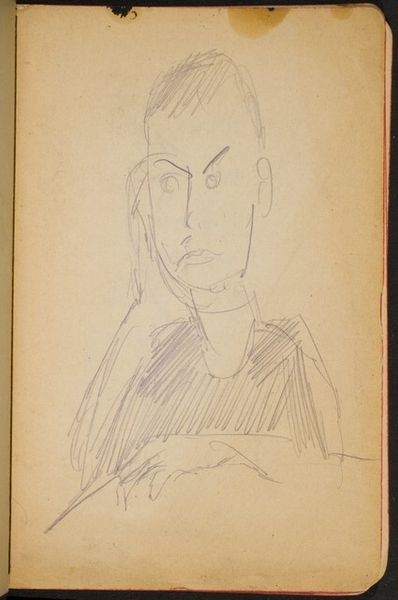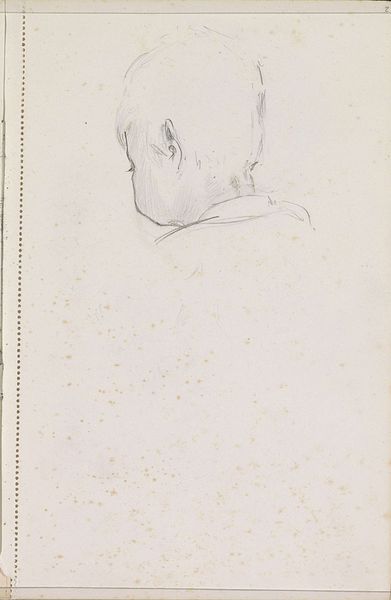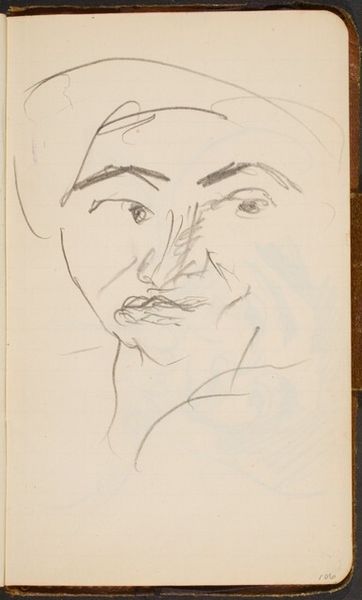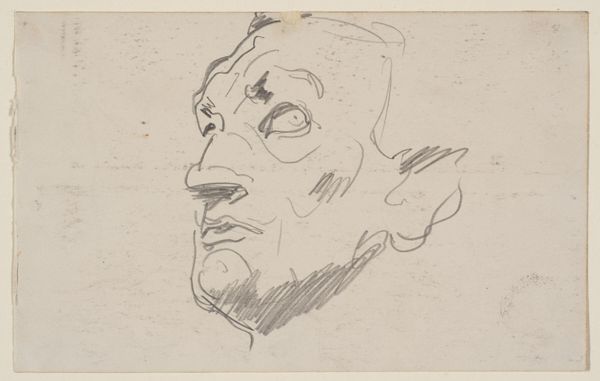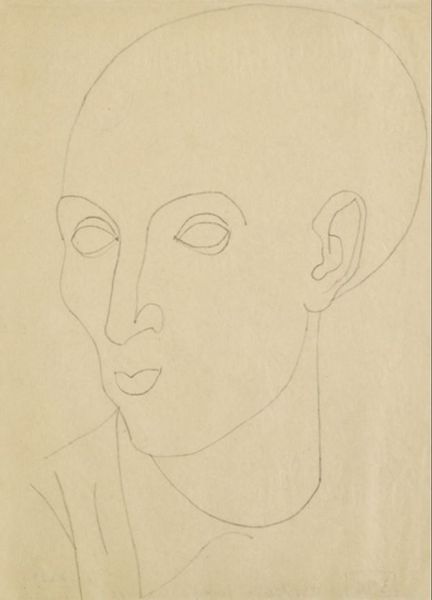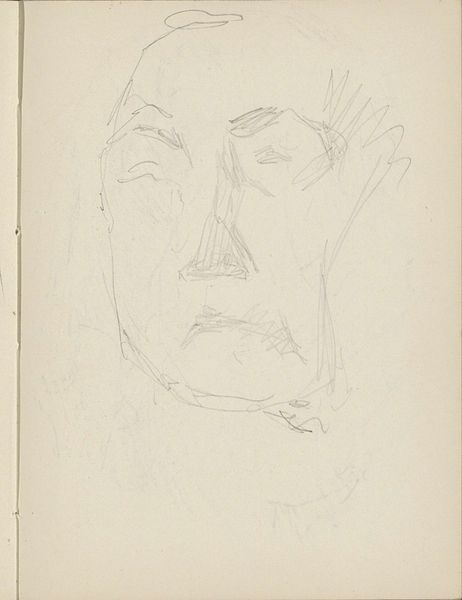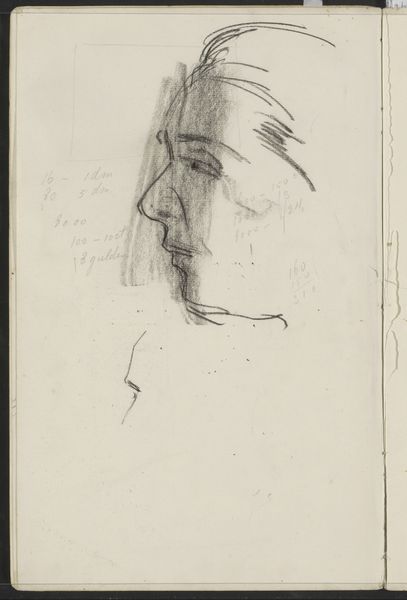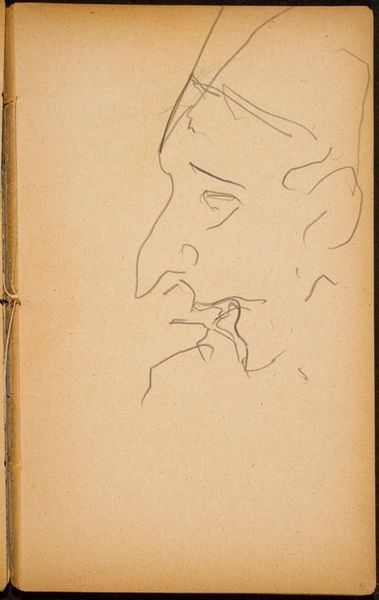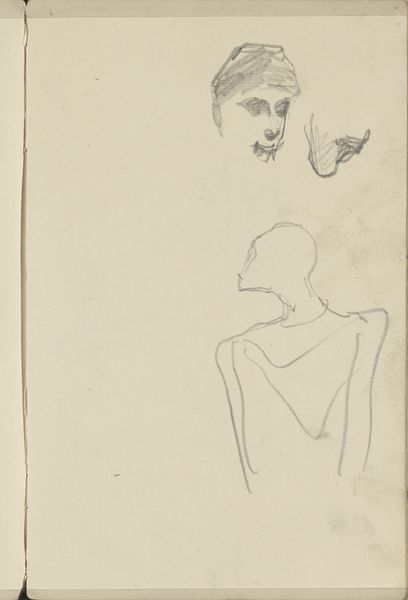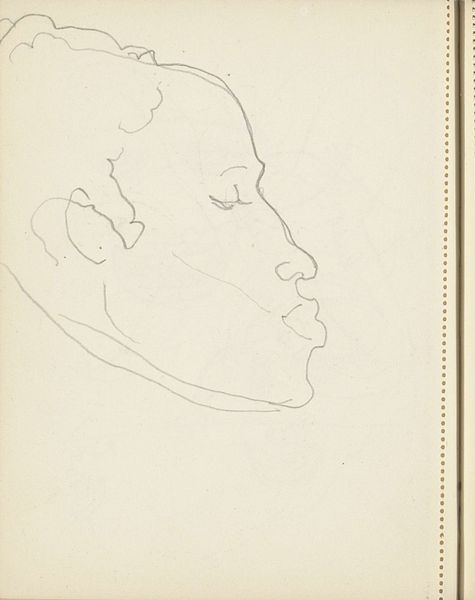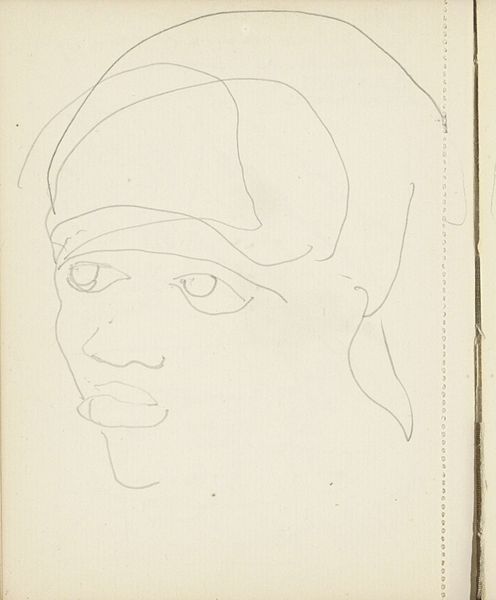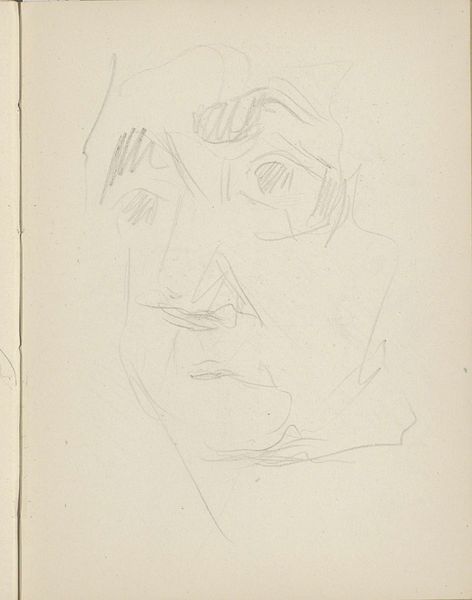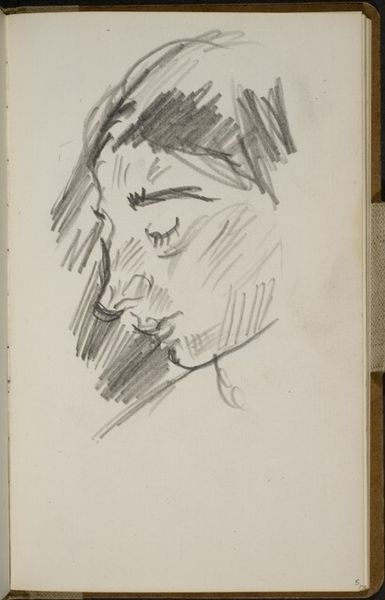![männlicher Kopf (Man's Head) [p. 96] by Max Beckmann](/_next/image?url=https%3A%2F%2Fd2w8kbdekdi1gv.cloudfront.net%2FeyJidWNrZXQiOiAiYXJ0ZXJhLWltYWdlcy1idWNrZXQiLCAia2V5IjogImFydHdvcmtzLzIxM2NkNzYwLTkwYjAtNGRmMC1iMWFkLWIzOTU2Mjg1NzdjNS8yMTNjZDc2MC05MGIwLTRkZjAtYjFhZC1iMzk1NjI4NTc3YzVfZnVsbC5qcGciLCAiZWRpdHMiOiB7InJlc2l6ZSI6IHsid2lkdGgiOiAxOTIwLCAiaGVpZ2h0IjogMTkyMCwgImZpdCI6ICJpbnNpZGUifX19&w=828&q=75)
drawing, paper, pencil
#
portrait
#
drawing
#
self-portrait
#
german-expressionism
#
paper
#
pencil
Dimensions: page size: 15.2 x 9.5 cm (6 x 3 3/4 in.)
Copyright: National Gallery of Art: CC0 1.0
Curator: Immediately, I sense a searching quality, almost unsettling. It feels so raw, unfinished… as though the artist caught something profound mid-thought. Editor: Indeed. What we’re looking at here is “Männlicher Kopf,” or "Man’s Head," a pencil drawing by Max Beckmann, created sometime between 1914 and 1915. He renders the figure’s self portrait sketch, on a sheet of paper from a sketchbook. Beckmann, of course, was a central figure in German Expressionism. Curator: And seeing it situated within that context... knowing the tumultuous period in which it was made… The almost brutal simplicity seems intentional. There’s no idealization here. It’s a portrait stripped bare. He gives the figure his gaze looking askance. There's so much psychology packed into so few lines, so much identity exposed with so little to go on. Is he reflecting the anxieties of his time, a raw interrogation of self in a world collapsing? Editor: Possibly. The drawing certainly exemplifies the anxieties of the era. Consider also how institutions historically framed artists' self-portraits: as tools of self-promotion, affirmations of genius, but the First World War changed the dynamics for artists, prompting some introspection and the expression of their vulnerabilities. Beckmann enlisted as a medical orderly during the war; what kind of public and personal effect do you think being placed on the front line would create for the subject? Curator: A profound destabilization of the very concept of self. The old notions of heroism, of the individual's place in the grand scheme, just shattered. It's the very intersection of identity, conflict, and representation. He isn’t some glorious, self-assured figure. He’s questioning himself. Editor: This simple work prompts profound questions about art's function during societal upheaval. Was art an escape, a form of protest, or merely a means of chronicling a world transformed by war and unrest? Curator: To me, Beckmann's drawing makes that question all the more crucial for our own time. What voices, what experiences are excluded when we cling to old structures? What new narratives might emerge if we truly opened ourselves up to that vulnerability? Editor: And perhaps, in doing so, find a more truthful, less glorified reflection of ourselves and our shared history.
Comments
No comments
Be the first to comment and join the conversation on the ultimate creative platform.
